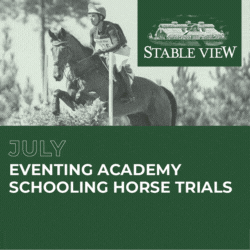In this excerpt from Training Horses the Ingrid Klimke Way, Olympic eventer Ingrid Klimke explains her views on respecting each horse as an individual and the superior results you can attain when you allow a horse’s personality to shine.

Photo by Horst Streitferdt.
If I want to build unity with a horse, I need to listen really deeply and get on the same wavelength with him. A certain inner attitude is required to build a positive relationship. The power of positive thinking will carry over to the horse, and so will the power of negative thinking. I can only build a close relationship with my horse if I like him and I show him that.
Each horse has an entirely individual personality, just as we humans do. One personality type appeals to me more, another less. After some years, I know as a rider which types of horses I prefer, and which less so. I look for those that are a good fit for me. Still, it takes a while until I can really know the character of a horse. I’ll have to live with some quirks and characteristics I may not prefer. However, I always try to have a positive influence on the horse’s personality.
Through deliberate training, bad habits can become less pronounced; but, having said that, I must never allow myself to believe that I will be able to change the horse’s essential character, which I could not do if I wanted to—for example, a horse that tends toward “laziness” and would rather not try too hard.
To deliberately develop the horse’s personality within his potential means to notice his personality, understand it, and cherish it: notice just how this creature is—with his strengths and his weaknesses. As such, I must not suppress his personality for any reason. This advice, too, was passed down to me from my dad. I need to completely take my cues from the horse, listen deeply, and remain very open to what comes forth.
With a shy horse, it can certainly take a while before he trusts you enough to show himself. In this case, I need to practice patience and not pressure him with expectations set too high. I need to find out what gives him pleasure and which activities and tasks allow him to relax. By accomplishing this, I’ve already achieved a lot.
In contrast, with a confident horse, the challenge lies in maintaining and developing his significant motivation, while at the same time establishing a conscious basic obedience. My mare Escada is a good example. She is really ambitious, with lots of courage and confidence, but at the same time has the tendency, especially in dressage, to be too independent from me. Since she already knows—for the most part—which element follows which in the test, she doesn’t need me to provide the aids at all, and would prefer to self-confidently anticipate every element of the test. It took a long time and many attempts at dressage tests until she finally learned to wait for my aids, and we continue to patiently work on this.
The balancing act lies in the fact that I want to cultivate autonomy in my horses and I don’t want to suppress their willingness to perform, but at the same time, I cannot just be the “passenger.” They must give me their complete attention, so that we are together in the same moment, concentrating on the same thing. With Escada, I got to that point by often taking her to dressage competitions so that she would get familiar with what is expected there. It also turned out to be good for her to have the experience of completing a dressage test and not automatically going cross-country the next day. This helped her relax more and develop an inner calm.
When riding a dressage test, I direct my thinking and aids very strongly onto the element we’re doing in the moment. However, I also need to be ready to think about the correct execution of the next movement five to six seconds ahead of time. This means the next movement is always already in my head. This can potentially cause a very refined, sensitive horse to anticipate. Should I punish a horse for thinking independently? No! I must, however, correct the horse consistently and with the necessary calmness, and have patience.
This excerpt from Training Horses the Ingrid Klimke Way by Ingrid Klimke is reprinted with permission from Trafalgar Square Books (www.horseandriderbooks.com).





















